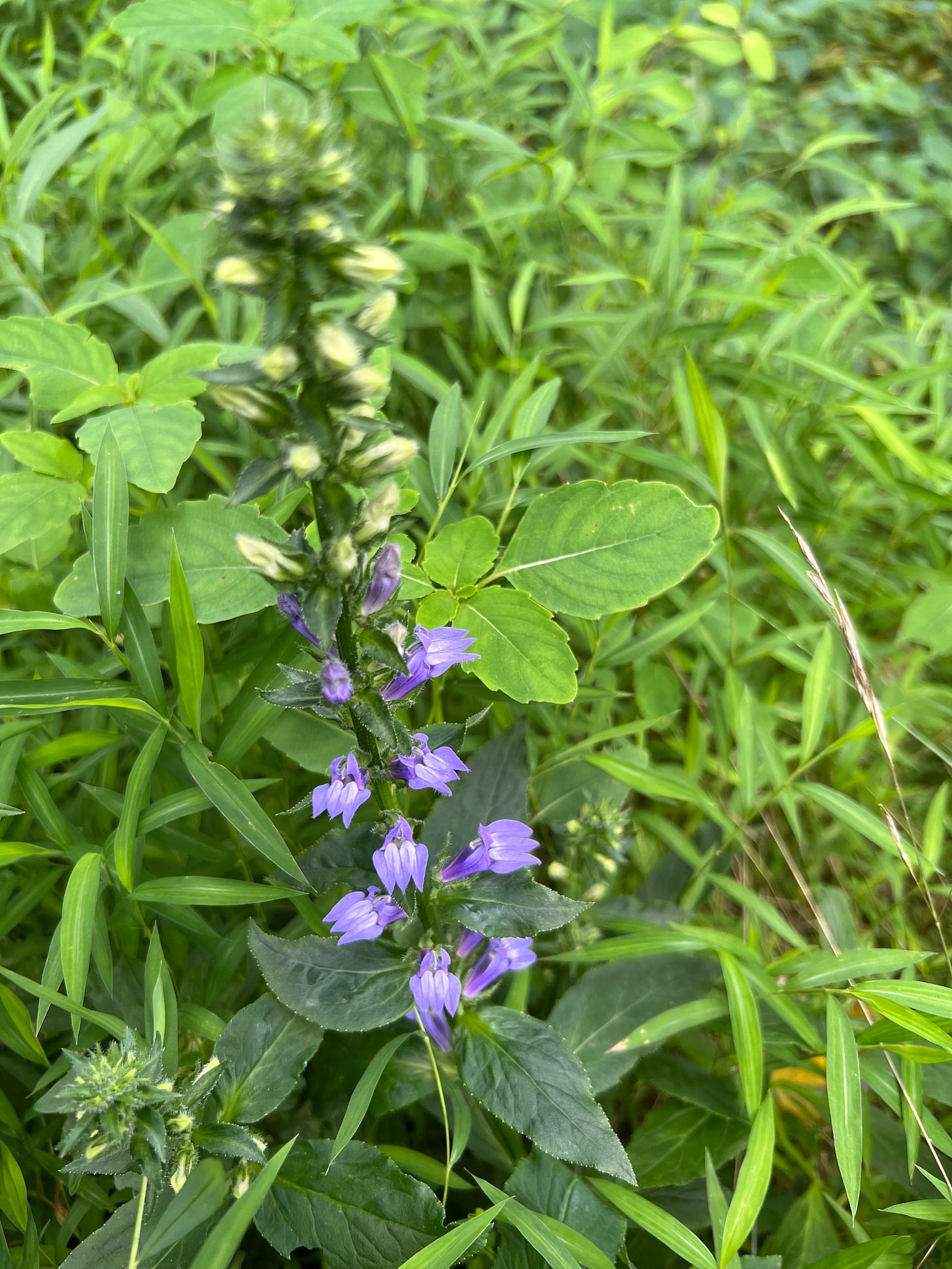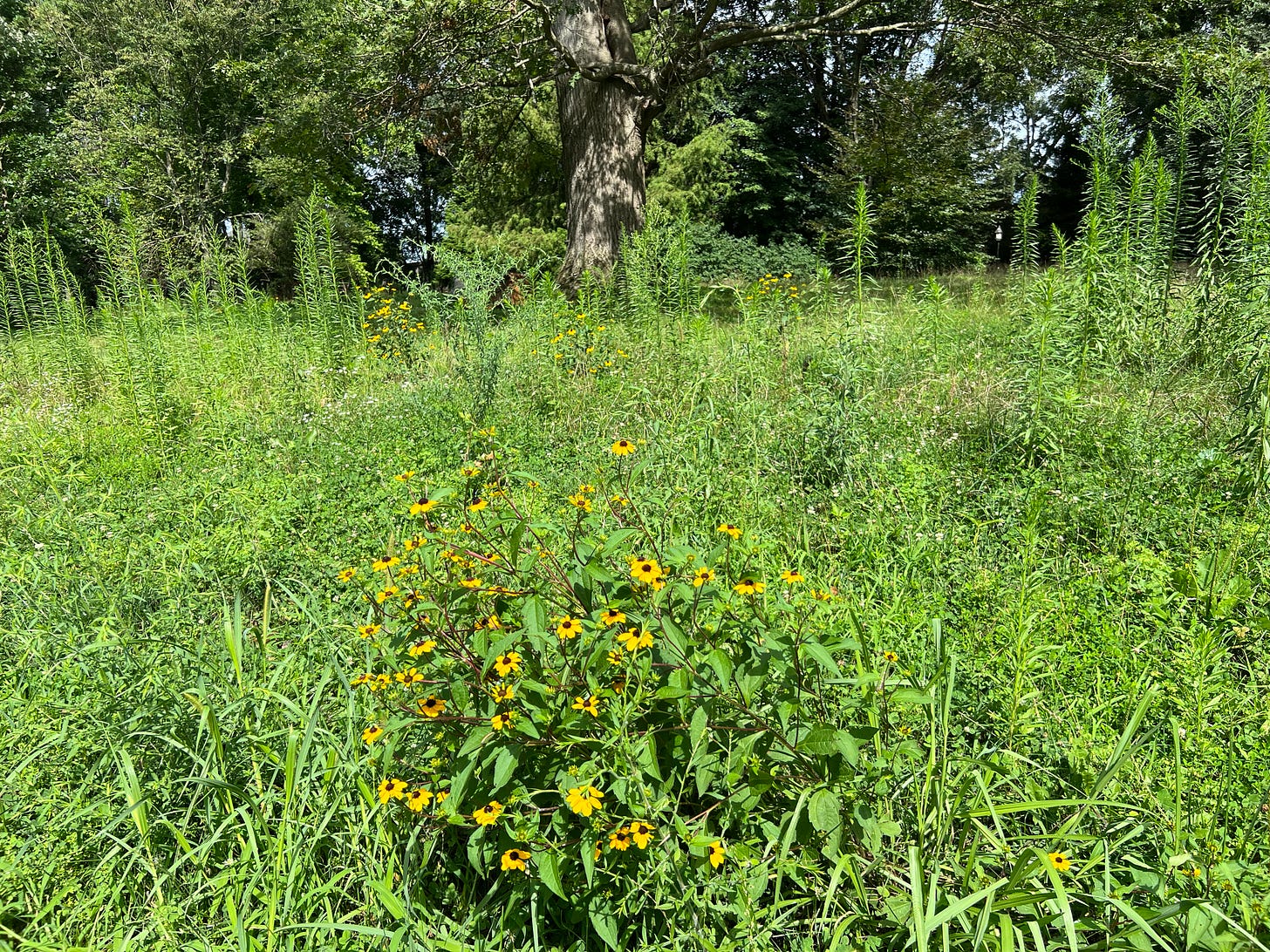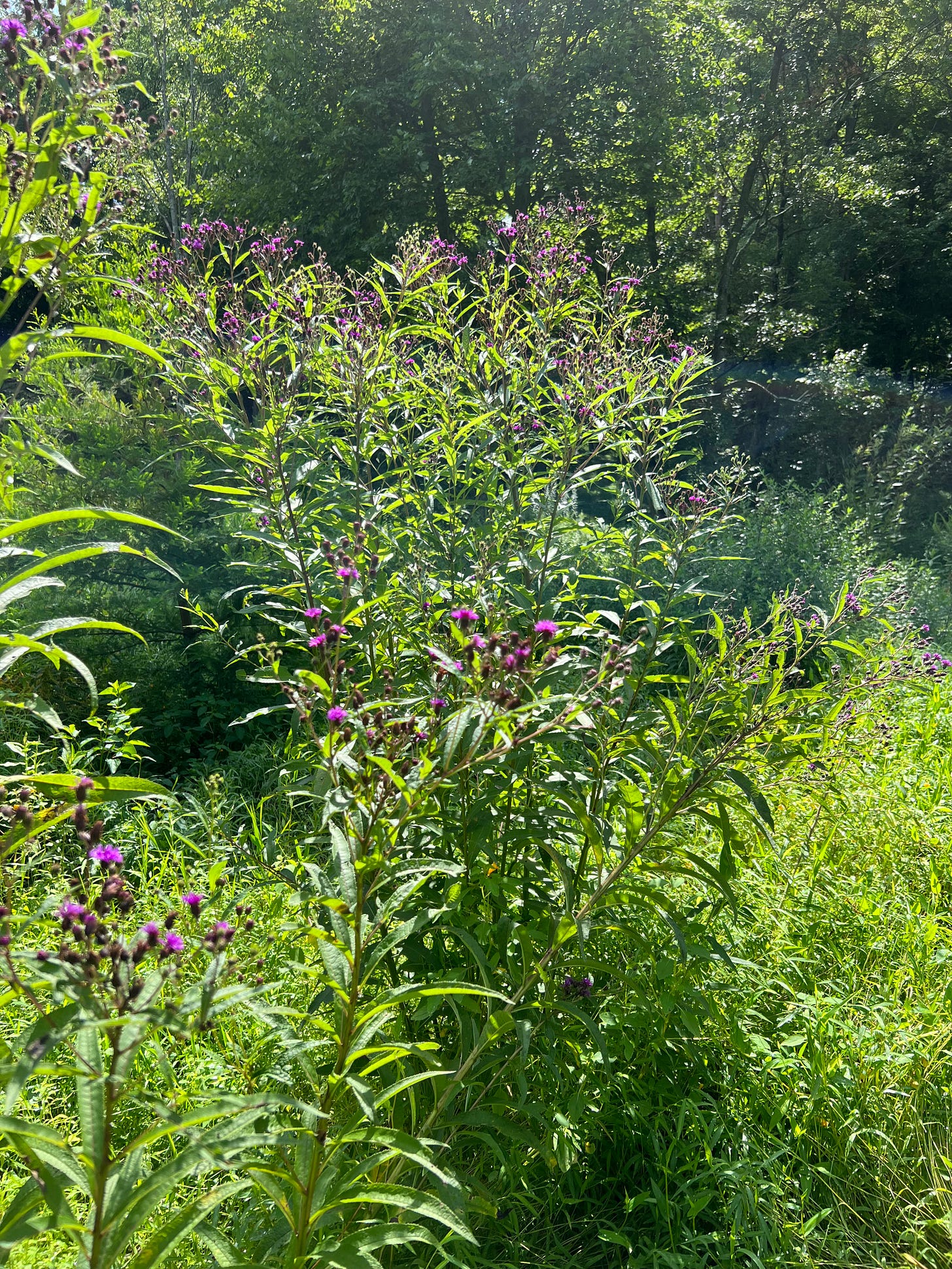The Gardener’s Dilemma(s)
Puddock Hill Journal #46: An afternoon with the string trimmer has me reflecting on the compromises we must make.
As a writer of fiction (more on that soon), I spend a good deal of time thinking about moral dilemmas.
In my first novel, Primacy, a young vet tech at an animal testing facility must choose between the stability of her job and risking it all for a special animal. In The Dark Pool, a winning high school football coach must choose between an invitation to the college level and sticking with the kids who rely on him. In Blast from the Past, the fourth book in the Bomb Squad NYC series, a seasoned cop must choose between obeying the rules and finding the truth.
My dictionary defines moral dilemma as “a situation in which a difficult choice has to be made between two courses of action, either of which entails transgressing a moral principle.” That moral principle need not be a societal one, although having to choose which of the Ten Commandments to break is always a good start in storytelling. It can also be a principle that the character has set for herself. Perhaps the greatest moral dilemma in modern literature was the one portrayed by William Styron in Sophie’s Choice—a mother forced to choose which of her children to send to the gas chamber.
Moral dilemmas make for compelling reading because they reveal character. What kind of person is this protagonist deep down inside? The kind who would keep her head down in the face of evil or the kind who would risk her life for a more just world? Given conflicting choices that have to be made under pressure and are equally good or bad, the character’s decisions reveal values that she might not even know she possessed.
Do we face moral dilemmas in real life? You betcha. As a backyard steward, I’ve had to decide between allowing the deer herd to pass through, which devastates our native plants, and fencing them out, which has its own consequences outside the fence. I’ve forced myself to choose between showier exotic plants and less exuberant natives that support wild fauna. I’ve made choices between mowing more lawn and less, the latter, of course, more supportive of native arthropods but also more likely to give a foothold to invasive plants.
Next to Sophie’s choice, on first blush these decisions seem trivial, but they too involve life and death—not only of given plants or animals, but of the system that sustains life on Earth.
Invasive species present one of the backyard steward’s biggest dilemmas, which I am reminded of often these days as I work the string trimmer or ask the mowing service to expand their efforts. My No Mow philosophy may have extended well beyond May, but, alas, it can’t go on forever.
This time of year, the biggest challenge is Japanese stiltgrass (Microstegium vimineum), an annual which has begun to bolt and will soon produce billions of seeds. Here’s a patch in full assault mode on the slope between the driveway and the small pond meadow:
Each plant can send out 1,000 seeds, and there are millions of plants just in my vicinity. On level surfaces, we will hit it with mowers. In places where it’s harder for the mower to reach, we rely on string trimming, which is more precarious.
Left to its own devices, the stiltgrass grows in vast swaths, crowding out the competition in sun or shade and forming a monoculture that is unsupportive of the local ecology. In many cases, however, it intermingles with natives. The mower, of course, cannot discriminate. And the string trimmer—even though I’m careful to use a short string length—cannot be used surgically.
And so the dilemma arises. Do I attempt to eliminate every sprig of stiltgrass at the expense of natives growing among it? Or do I spare some of that fecund stiltgrass in the interest of saving nearby natives?
The dilemma is made more poignant by the fact that stiltgrass isn’t the only plant out there racing to set seed. This time of year, many natives are hard at work trying to do the same, in particular swamp agrimony (Agrimonia parviflora), Galium species, and Lobelia species, among others. Meanwhile, late summer native bloomers such as goldenrod and aster are just beginning or preparing to bloom.
If these later blooming plants and later setters of seed get mowed over in my attempts to destroy the stiltgrass, what will remain to sustain the native insects and the animals that eat them? How will the good guys’ seed banks ever get replenished? Won’t killing everything eventually leave me with nothing?
And so, unlike fictional protagonists, I don’t actually choose one path or the other. I compromise, knowing this compromise will probably condemn me to fighting stiltgrass for the rest of my gardening days. And, truth be told, I would likely be condemned to that course anyway, since stiltgrass runs rampant on neighbors’ properties just outside the gate, spewing its seed into the wind.
I’m not sure what any of this says about my character in the end, but it speaks volumes to the difficulty all backyard stewards face balancing their efforts in an increasingly imbalanced world.
Native great blue lobelia (Lobelia siphiliticata) flowers among invasive Japanese stiltgrass and native jewelweed (Impatiens capensis) near the stream:
Common boneset (Eupatorium perfoliatum) prepares to flower nearby:
Bedstraw (Galium spp.) produces a profusion of delicate flowers in the wet meadow:
Native black root (Veronicastrum virginicum), thrives beside the garden shed:
Native black-eyed Susan (Rudbeckia spp.) has cropped up in the no-mow area behind the shed:
Native New York ironweed (Vernonia noveboracensis) stands tall in the wet meadow:
Native Spotted Joe-pyeweed (Eutrochium maculatum) is getting established nearby:










